| Photo of the month – January 2013 |
[German version] |
Winter wonderland 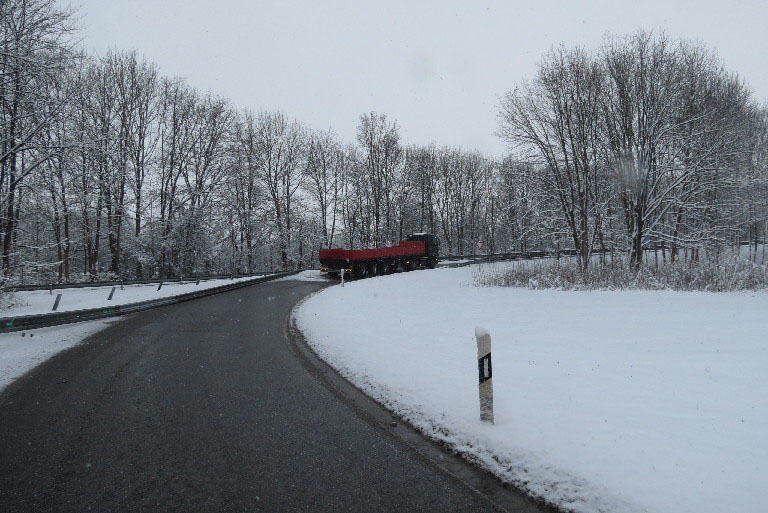 Figure 1 [Martin Menzinger] At this time of year, winter traditionally has large parts of the northern hemisphere firmly in its grip. The trees have lost their leaves, nature is taking a rest and children long for snow so that they can go tobogganing. And this quiet, white world has an appeal of its own, even if that appeal is limited to a wistful expectation of the coming summer. 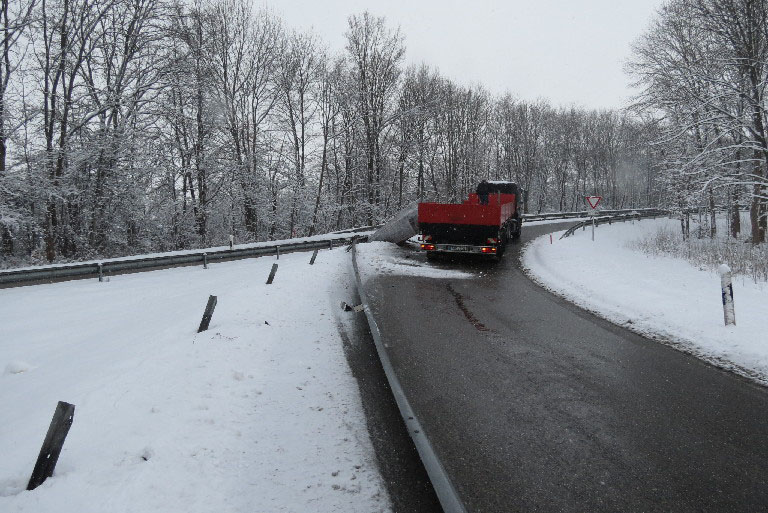 Figure 2 [Martin Menzinger] But since this column is not about pretty landscapes, but about load-securing, let’s get down to business. Winter invariably brings with it ice and snow. It is somewhat of a truism, and one that our children quickly find out on their toboggans, that the friction on the metal runners is negligible, which makes for a great deal of fun when tobogganing. We only have to think of the friction circle to know that friction acts in all directions, but we shouldn’t forget that it also acts wherever we are. Not just when we are indulging in sports or leisure activities, but also when we really don’t need it to be quite so low. Figure 2 shows a vehicle that has lost its load on a freeway exit. Our initial reaction is to think how fortunate it was that there were no other vehicles involved and that the load appears to have slipped onto the hard shoulder. 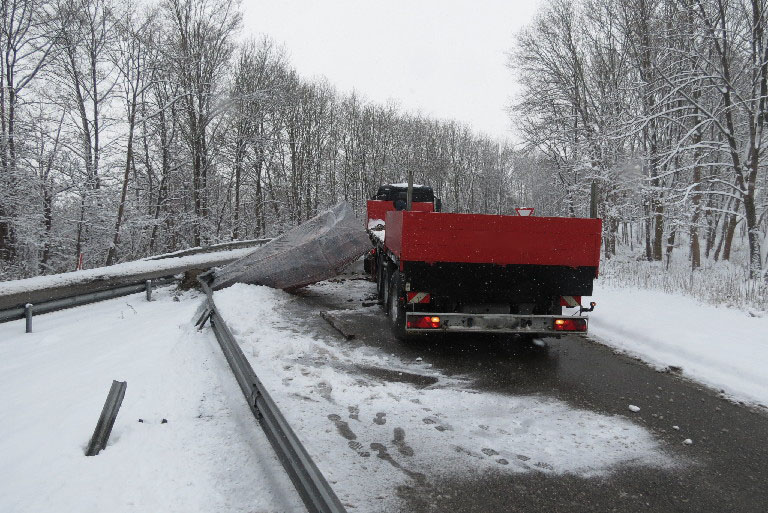 Figure 3 [Martin Menzinger] As we approach the vehicle, this assumption is confirmed. Traffic on the oncoming lane, which is out of sight, but just behind the closest barrier, was not affected. The way in which the load has buried itself suggests that it must be extremely heavy. And so it is. There are some 18,450 kg buried in the ground at a value of around 60,000 euros. It is a steel component, that we do not need to describe in greater detail except that it is long and heavy and also provided plenty of opportunities for securing it directly. 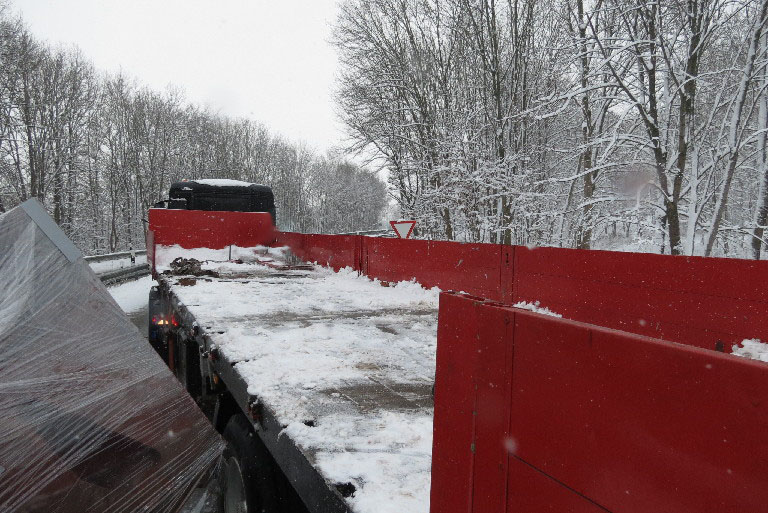 Figure 4 [Martin Menzinger] The driver and the loader (the latter of whom we increasingly wish to focus on in our column) quite clearly gave some thought to securing the load. The steel component was at least resting on three wooden planks. Anti-slip mats had been placed under the planks. But unfortunately, there was something else under the anti-slip mats, namely snow. And snow reduces friction not only under the runners of toboggans, but also under anti-slip mats. The driver rather meekly confirmed that he had cleared the worst of the snow, but as many know from painful experience, it is perfectly possible to slip on a very small amount of snow. To tell the truth, this Photo of the Month is an absolute gift, because it provides the perfect opportunity for describing inconsistencies in attempts to increase friction. That’s right, we never tire of stressing the fact that the friction chain must be systematically maintained from the load, through any load-securing equipment and load-distribution measures such as wooden planks right down to the loading surface. So what was actually done in this case? The steel component was resting on wooden planks, which were in turn resting on anti-slip mats, and there was snow between the anti-slip mats and the loading surface. The first inconsistency is that the steel component, which had a relatively smooth surface, was simply resting on the wooden planks. If the load begins to slip, it will do so on the wooden planks, because anti-slip material has been placed underneath these, and this will generally (i.e. without snow) provide excellent friction. The second inconsistency with respect to friction is that the rubber mats are actually resting on snow. At temperatures approaching freezing, it is always the case that loading surfaces must either be dry, or that they must, of course, be free of snow and ice and, if necessary, they must be salted to ensure that this is so. A loading surface that resembles a bobsleigh run most certainly fails to fulfill these requirements. 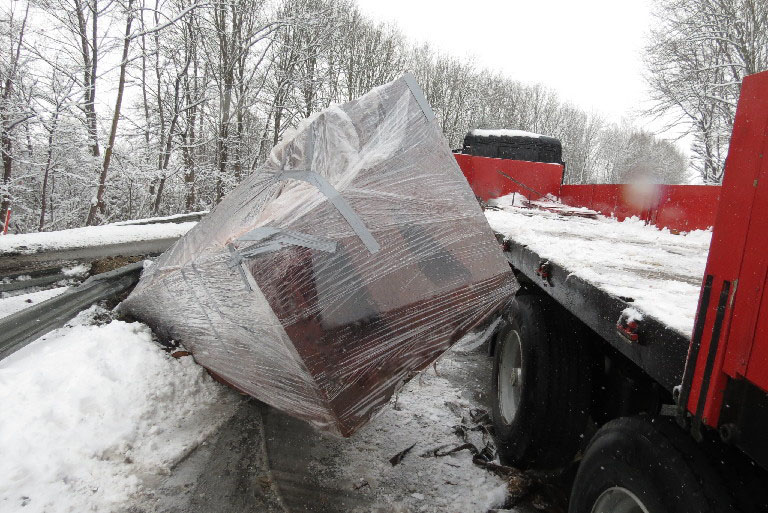 Figure 5 [Martin Menzinger] Figure 5 gives some impression of the kinetic energy that was released here. After all, the articulated truck approached this bend at 45 kph. 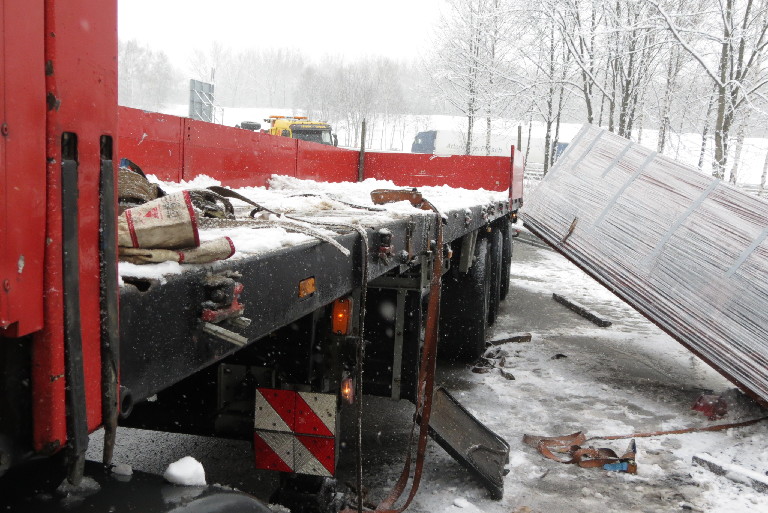 Figure 6 [Martin Menzinger] Figure 6 shows clearly that several belts had been used. The police officer who recorded this incident and kindly made these photographs available to us counted a total of 10 belts, some of which were fit for scrapping. All the belts had been used as tie-down lashings. In this column, we have often voiced our skepticism with respect to tie-down lashings, particularly when they are used with heavy loads. Tie-down lashings can be a good, quick, safe method of securing a load if sufficient friction is available, because it is a securing method that relies on the principle of increasing friction. But what friction is there likely to be on a loading surface that is more like a bobsleigh run than a loading surface and on which goods to the value of no less than 60,000 euros are being transported. And the real tragedy in this case is that the load presented a danger to other road users. 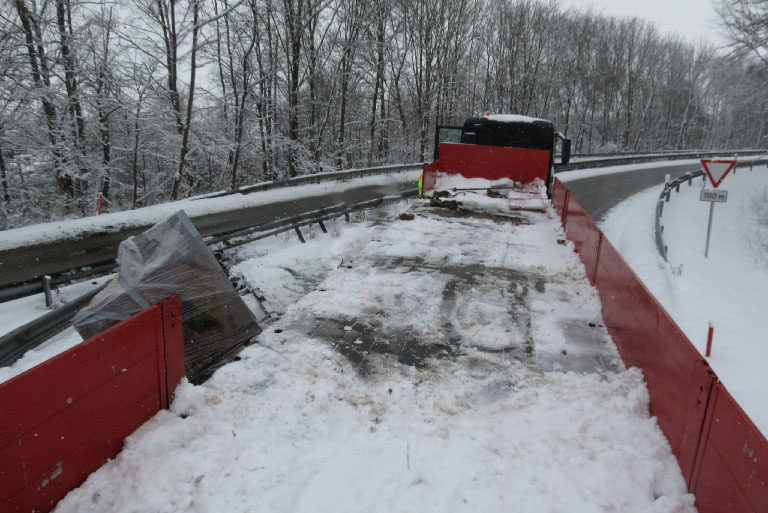 Figure 7 [Martin Menzinger] If you wish to take the friction on the loading surface into account when securing a load, then the surface must always be completely free of ice and snow, it should be salted and the load-securing points must be completely free and accessible. Salt and hot water can be used to achieve this. Be careful if hot water is used, since this can freeze on the loading surface and is only a second-choice option, which will involve the use of even more salt. If it is not absolutely certain that the loading surface can be completely freed of ice and snow, the solution is relatively straightforward, namely to employ direct lashings to secure the load. Direct lashings also work on snow and ice. As figure 8 will show, it is perfectly possible to pass belts and chains through the component itself so that the five belts that are necessary to secure the load in the direction of travel alone can be distributed over a corresponding number of load-securing points. In this case, only direct lashings are required. Because the presence of snow and ice means that calculations have to be done without friction, it is very easy to determine the number of belts required. To the sides and to the rear, acceleration forces of up to 0.5 have to be assumed. The weight of the load (18.5 t) is divided by 2 and the result is then divided by 4. We divide by four because each belt has a securing capacity of up to 4 t (4,000 daN) when used as a loop lashing. This only applies if the belts can be used to secure the load without angles having any impact. This was the case for this steel component, so that only three loop lashings were required to secure the load to each side, and a further three to the rear. 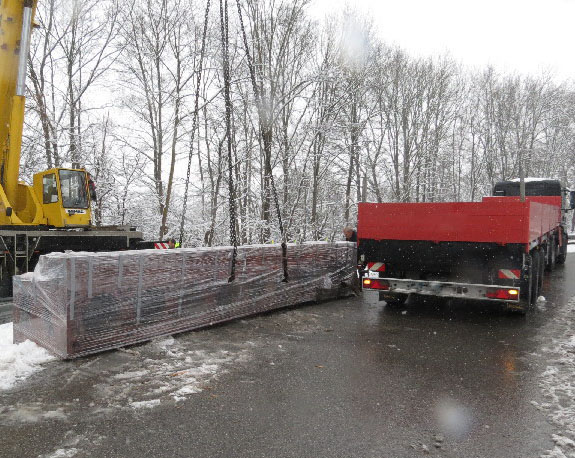 Figure 8 [Martin Menzinger] The crater that resulted when this load crashed into the ground was around 1 meter deep. This figure indicates the amount of work that resulted from carelessness when assessing the friction on the loading surface. We wish all our readers a healthy, well-secured 2013! Back to beginning |
